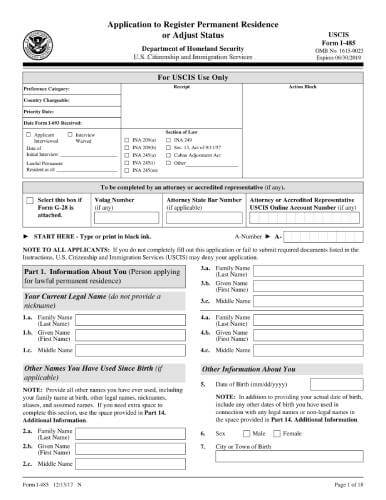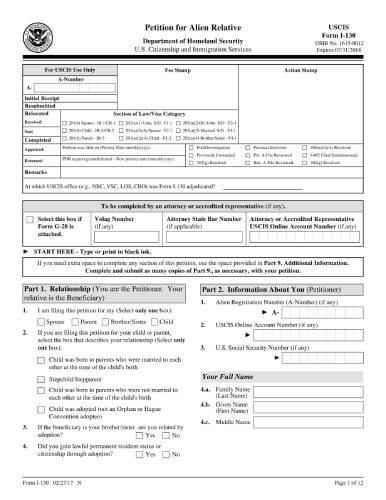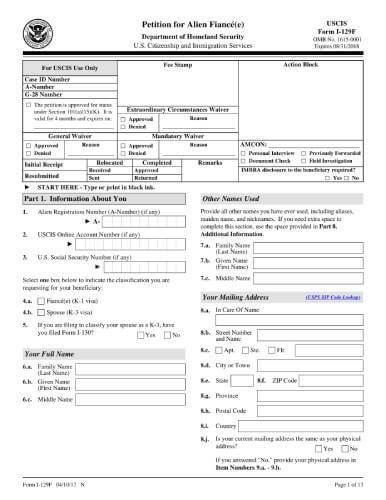Your eligibility category determines the time when you can file Application to Register Permanent Residence or Adjust Status (Form I-485). Different eligibility requirements may be applied for different immigration categories.
As it is stipulated by Instructions for Form I-485, you can apply either as a principal applicant (a person who directly meets criteria of a certain immigrant category), or as a derivative applicant (a principal applicant’s family member).
In general, a beneficiary of an immigrant visa petition, such as Form I-140 (Immigrant Petition for Alien Worker), Form I-360 (Petition for Amerasian, Widow(er) or Special Immigrant), Form I-130 (Petition for Alien Relative), should submit Form I-485 only after U.S. Citizenship and Immigration Services approves his/her petition and grants an immigrant visa number. If you belong to a certain immigrant category, it is possible to resort to “concurrent filing”, i.e. to file Form I-485 before your visa petition is approved by USCIS (subject to visa petition approval and granting a visa number soon after that, and fulfillment of other requirements).
Except asylees, refugees, and U nonimmigrants, USCIS cannot approve Form I-485 of a derivative applicant until the principal applicant gets the status of lawful permanent resident.
A spouse or a child (unmarried and younger than 21) of a principal applicant can submit Form I-485 at the same time or after the principal applicant files Form I-485 (if spouse’s or child’s immigrant visa is available and he/she meets all the filing requirements). In the case of Petition for Alien Fiancé(e) (Form I-129F) being a basis of person’s filing, Form I-485 can be filed when he/she enters the USA on a K-1 visa and gets married to an American citizen who covers his/her I-129F petition within 90 days period. When child enters the USA on K-2 visa, both he/she and his/her K-1 parent can file Form I-485. Before filing Form I-485, other related forms should be prepared and filed in most cases.
Last Updated 03/03/20 03:46:47AM


 Form I-485 | Application to Register Permanent Residence or Adjust Status
Form I-485 | Application to Register Permanent Residence or Adjust Status
 Form I-130 | Petition for Alien Relative
Form I-130 | Petition for Alien Relative
 Form I-129F | Petition for Alien Fiancé(e)
Form I-129F | Petition for Alien Fiancé(e)